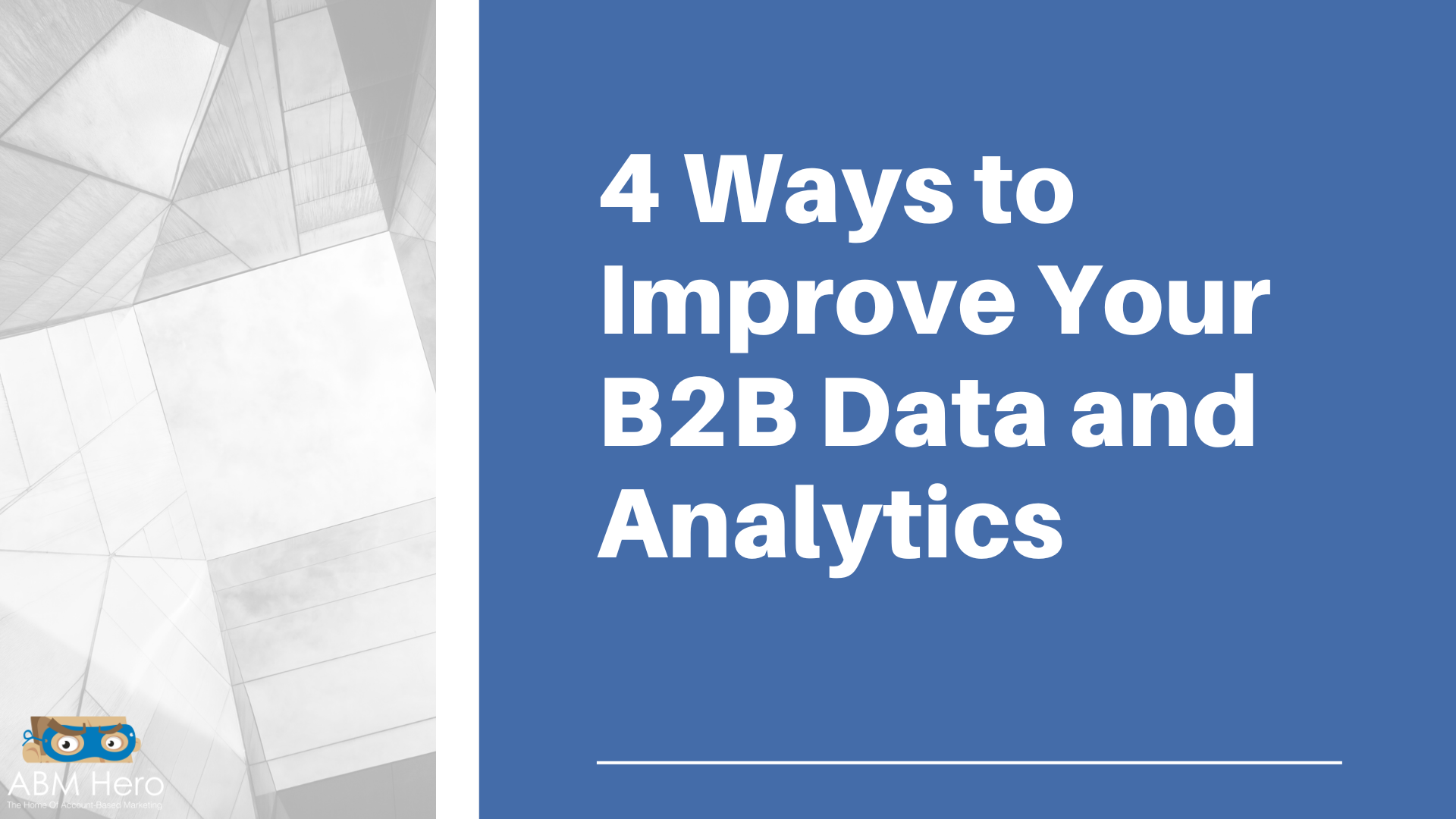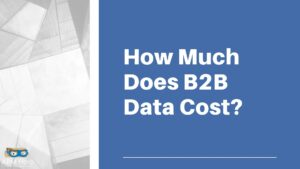B2B Data and analytics are critical for any business, particularly for businesses that operate in an ever-changing business setting.
It is not surprising that they play a vital role in business today. Though, it’s just as important to strike the right balance when using B2B Data and analytics. Too much focus on data can lead to rational decisions resulting to failing to see the bigger picture.
Regardless of the promise data brings to improving business functions, more than 87% of organizations are classified as having low business intelligence (BI) and analytics maturity, according to a Thursday Gartner report.
It creates a major obstacle for organizations that want to improve their data assets and take advantage of emerging analytics technologies like machine learning, the report noted.
Common Problems of Disjoint B2B Data and Analytics
Many companies suffer from disjointed data that doesn’t provide an insightful depiction of the overall aspects of the company.
Here are some contributing factors.
Aging IT Infrastructure
A primitive IT infrastructure is an obstacle to improving the connection between data and analytics as it lacks the necessary features and capabilities to support these activities effectively.
For example, a primitive IT infrastructure may lack the ability to collect and store data successfully, or it may lack the ability to process and analyze data efficiently.
As a result, a company that relies on an outdated IT infrastructure will likely struggle to improve its connection between data and analytics and may find it challenging to use.
Limited Collaboration Between IT and Business Users
One of the main reasons why a limited collaboration between IT and business users is a restriction to improving the connection between B2B data and analytics is that it can lead to a disconnect between the two groups.
Business users may not fully understand the data and analytics if they are not working closely with IT, and IT may not effectively communicate the business goals to the business users.
It can create a situation where the two groups are not working together towards a common goal, resulting set back the overall process.
Siloed Data
Data is often siloed within organizations, making it difficult to get a holistic view of the business.
Also, data is constantly changing, making it troublesome to track changes over time.
In addition, analytics is often applied to support decision-making. However, it is laborious to show how analytics has directly led to improved business outcomes.
4 Ways to Improve B2B Data and Analytics
Here are 4 ways how you can integrate and empower data and analytics platforms.
Develop Holistic Strategies

It has been percieved that some B2B companies with low business intelligence lack enterprise-wide data analytics strategies.
There could be various reasons for this. It could be due to the lack of understanding of the importance of data analytics or the lack of skilled resources.
Additionally, the company might not have a clear strategy or vision on how to use data analytics to improve its business.
Without a clear plan, it can be complicated to justify the investment in data analytics. Another possibility is that the company culture is not conducive to data-driven decision-making.
In such an environment, decision-makers may be resistant to change or dependable to using data to make informed decisions.
Data and analytics professionals must coordinate with IT and business leaders to develop a holistic Business intelligence strategy for some reasons.
First, data and analytics professionals have the technical expertise needed to develop and implement an effective Business intelligence strategy.
Second, IT and business leaders have the organizational knowledge and resources needed to ensure that the strategy is successfully executed.
Third, coordinating between data and analytics professionals and IT and business leaders ensures that the Business intelligence strategy is aligned with the overall business strategy.
Finally, coordinating between data and analytics professionals and IT and business leaders helps avoid duplication of effort and ensures that the resources of both groups are applied effectively.
Establish a Flexible Organizational Structure

Many companies lack the comprehensive analytics capabilities needed to really understand their data and make sound decisions based on it.
In-house analytics teams are often limited in terms of the tools and resources they have at their disposal, which can lead to subpar results.
Working with an outside firm that specializes in analytics can help companies get the most out of their data and make better-informed decisions.
There are several reasons why it is significant for leaders to build virtual BI teams that include business unit leaders and users.
Doing so can help further develop internal skillsets. By including business unit leaders and users in virtual BI teams, the respective leaders can provide them with the opportunity to learn more about the process and to gain valuable experience working with a different set of tools.
Also, including business unit leaders and users in virtual BI teams can help to build trust and collaboration between professionals and business unit leaders and users.
It is important because trust and collaboration are essential for successful data and analytical work.
Enforce Data Governance Program

A data governance program is a framework for managing data as a corporate asset.
The program defines roles and responsibilities for data stewardship, establishes processes for governing data, and provides guidance for making decisions about data.
The data governance program ensures that data is accurate, consistent, and accessible to those who need it.
A data governance program is essential to any B2B company for several reasons.
First, data governance provides a framework for ensuring that data is accurate, consistent, and reliable. This is critical for B2B companies, which rely on data to make decisions about products, pricing, and strategy.
Second, data governance helps to ensure that data is properly managed and controlled. This is important for B2B companies, which need to be able to access and analyze data to make informed decisions.
Finally, data governance can help B2B companies to comply with regulations and industry standards. This is important for companies that operate in highly regulated industries, such as healthcare and finance.
Create Integrated Analytics Platforms

There are many benefits to creating integrated analytics platforms, including the ability to support a broad range of uses. By integrating data from multiple sources, analysts can get an impeccable picture of what is happening across the organization.
It can help them identify trends and patterns. Besides, integrated platforms can provide the flexibility to support a variety of users with different needs.
For instance, some users may need access to real-time data, while others may need historical data. By providing access to both types of data, analysts can more easily meet the needs of all users.
There is no silver bullet when it comes to data and analytics. However, by following the four tips outlined above, you can give your B2B company a fighting chance at success.
Implement a data governance strategy, focus on data quality, invest in the right tools and platforms, and most importantly, make sure that you have the right people on your team.
With the appropriate systems in place, you’ll be well on your way to achieving your business goals.





